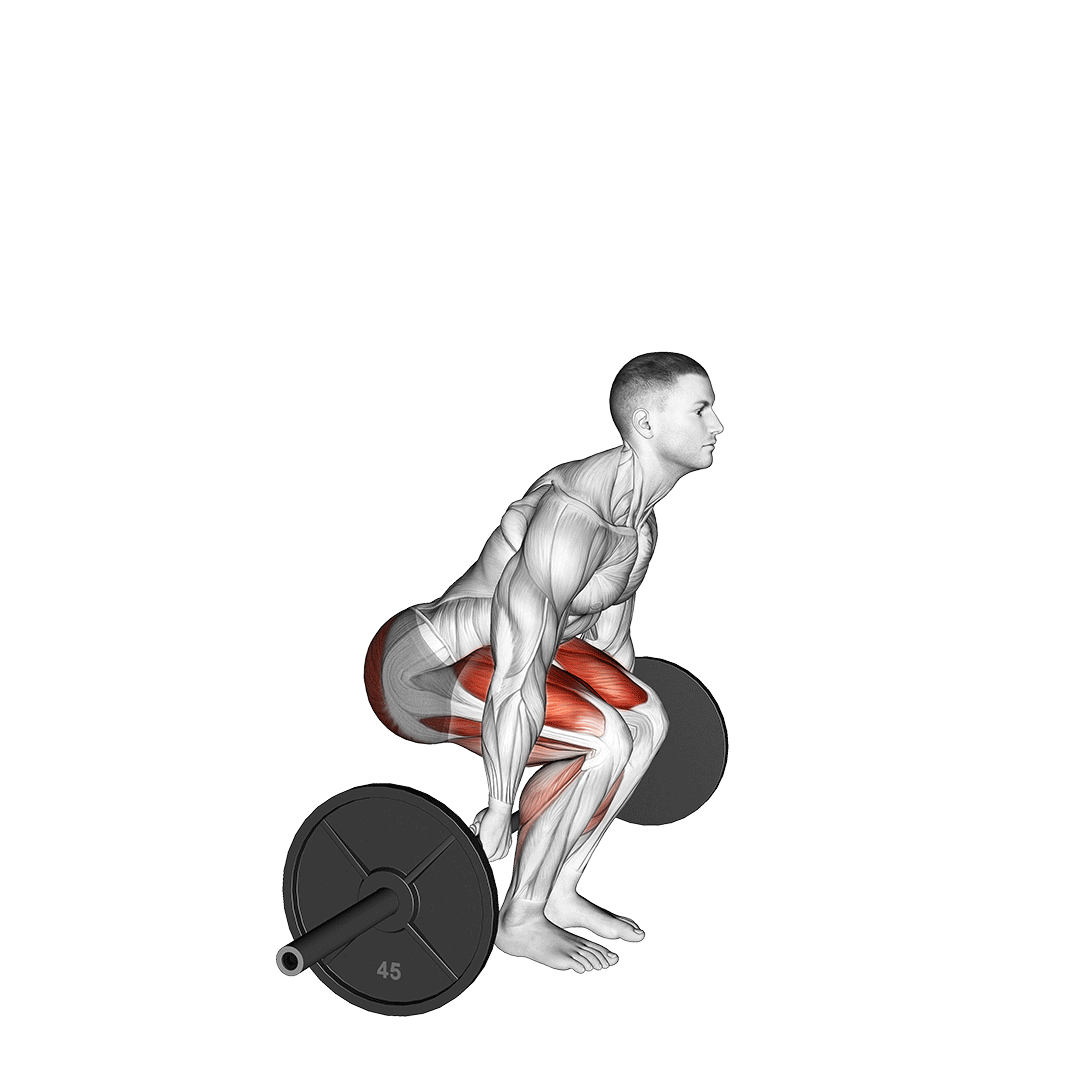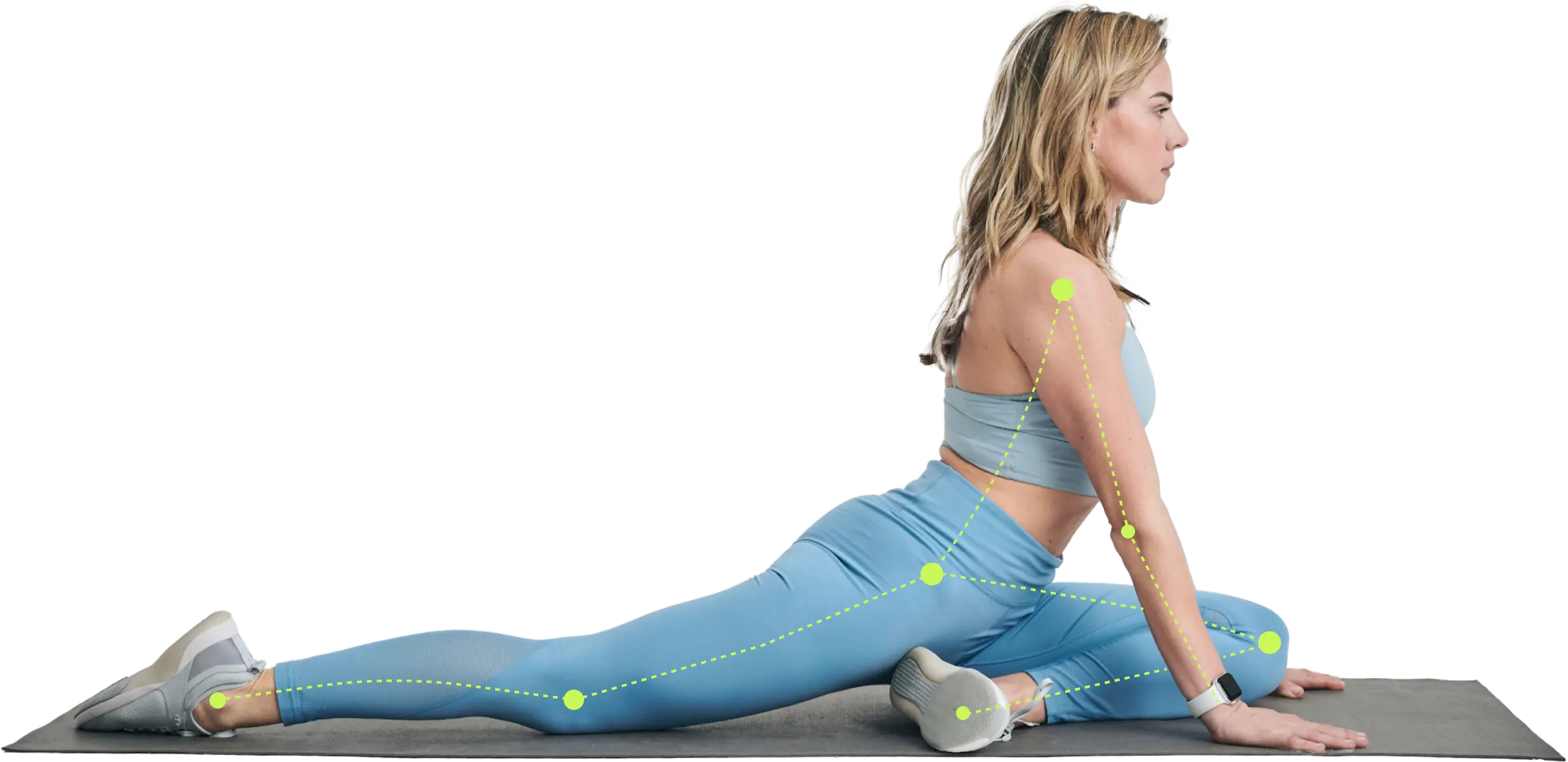Discover the unique benefits of behind-the-back deadlifts. Learn how this lift can target your posterior chain differently than traditional deadlifts.
![Guide to Behind-the-Back Deadlifts [Technique & Benefits]](/_next/image?url=https%3A%2F%2Fwww.zing.coach%2Flibrary%2Fbehind-the-back-deadlift-preview.webp&w=3840&q=75)
Looking for something to spice up your next deadlift day? Well, let me introduce you to a unique and underappreciated deadlift variation: the behind-the-back deadlift. Also known as the hack lift, hack deadlift or the deadlift behind legs, this deadlift accessory exercise offers a fresh challenge compared to the conventional deadlift and a range of benefits for experienced lifters. Let's dive into the technique, benefits, common mistakes, and how to incorporate this exercise into your training routine.
Behind-the-Back Deadlift - What Is It?
Unlike a conventional deadlift, where the bar is in front of you, a behind-the-back deadlift involves standing with your feet in front of the barbell. This setup shifts the emphasis to your quadriceps and offers a unique leverage advantage, making it a great alternative for those looking to diversify their leg training.
This makes it a valuable addition to any lifter’s routine, especially as an at-home exercise for those training with minimalist setups.
Variations of the Behind-the-Back Deadlift
Behind-the-Back Deadlift With a Wide Grip
Widening your grip can elevate the bar, shifting focus away from the hamstrings and more onto the upper back and traps. This variation can also make it more challenging to hold the bar, so using straps or grips may be beneficial.
Behind-the-Back Kettlebell Deadlift
Using one hand with a kettlebell can help restore extension function and improve rotational strength, adding another layer of complexity and benefit. This variation is particularly useful for correcting asymmetries and enhancing core stability.
How to Do the Behind-the-Back Deadlift
Setup
- Stand in front of the barbell with your feet about shoulder-width apart, toes pointed slightly outward.
- The barbell should be close to your heels or your calves.
- Hinge your hips back and bend your knees to lower, keeping your back straight with a neutral spine without rounding your back.
- Grip the bar with your hands shoulder-width apart.
Drive
- Take a deep breath, fill your abdomen with air, and brace your core to stabilize your spine.
- Pack your shoulders by engaging your lats to retract and depress your shoulder blades.
- Drive through your heels, straightening your legs and using your glutes and hamstrings to lift.
- Extend your hips early in the lift and maintain a straight back to prevent the bar from hitting your hamstrings.
- Your shoulders should rise at the same time.
Lockout
- Stand up straight with your shoulders back.
- Ensure that your hips are fully extended at the top of the movement.
- Reverse the movement to lower the bar back down and repeat.

Behind-the-Back Deadlift Benefits
Loading, Muscle Engagement and Equipment
The deadlift behind the legs splits the workload between your quadriceps and your posterior chain: your hamstrings, glute and lower back muscles. This balance is similar to other deadlift variations, like the trap bar deadlift, but without the need for specialized equipment. Since all you need is a barbell, this exercise is accessible for most lifters in any gym or even at home. While it can’t be loaded as heavily as other deadlift variations like the rack pull or a conventional deadlift, the focus on the lower body muscles makes it a great deadlift accessory exercise for building your leg strength.
Less Shoulder and Elbow Stress
Since the arms are positioned straight down by the sides of the body during a behind-the-back deadlift, there’s less shoulder abduction and external rotation, making this variation easier on the shoulders and elbows than a conventional deadlift. If you’re struggling with shoulder or elbow instability, this might be a good deadlift variation for you to try.
Improved Mobility and Flexibility
Conventional deadlifts and some deadlift variations like sumo deficit deadlift require good flexibility of the hips and hamstrings. It can be useful to have variations like the hack lift that require less mobility. The upright torso position and more natural arm and shoulder alignment reduces shearing force on the spine, while the lower degree of hip flexion make it a suitable option for individuals with limited mobility or those recovering from injuries. Remember, before you try any new deadlift variation, it’s a good idea to test your flexibility so you understand where your mobility might be an issue.
Behind-the-Back Deadlift - Common Mistakes
- Don’t let the bar hit your hamstrings on the way up by ensuring you're extending your hips properly as you lift.
- Extend your hips early in the lift to maintain a clear bar path and avoid contact with your legs.
- Positioning the bar just behind your legs will help you maintain your balance, but play around with what works for you.
- You also need a shoulder-width grip to let your arms maintain a natural position and to avoid the bar hitting your hammies
- Don’t let your knees come too far forward mid-lift, or it can disrupt the movement.
Tips for Integrating Behind-the-Back Deadlifts Into Your Training Program
For Hypertrophy
Once you’ve mastered the technique, you can use this variation for high-rep deadlifts, pushing for sets of 6-15 reps with 1-2 minutes of rest. This will help you to build muscle size in your quads and lower body by keeping the muscles under tension for longer periods.
For Strength
Perform 3-6 reps with 3-4 minutes of rest for maximum strength gains. This lower rep range allows you to lift heavier weights, promoting strength development.
For Efficiency
If you're looking for an effective yet efficient workout with minimal equipment, try combining behind-the-back deadlifts with barbell floor presses and rows in a barbell circuit.
For Something New
Adding this lift to your routine can challenge your body in new ways. Play around with it, experiment with making it a pause deadlift, and try substituting it for other leg exercises like traditional deadlifts or squats to add variety to your routine.
Final Thoughts
So, the next time you’re wondering what you can try to add a fun challenge to your deadlift session, you know what to do: throw in a few sets of behind-the-legs deadlifts, following the tips from this article. Why not give it a shot? Start with lighter weights, listen to your body, and pretty soon, this unique exercise will come naturally to you and add another string to your deadlift bow.
If you need some help with your strength training, check out a personalized workout plan from Zing Coach. You’ll get an AI-optimized training program that adapts to your progress and helps you get the most out of every workout. Take our free quiz to kickstart your fitness transformation!
FAQ
Tags
Authors
Medically reviewed
Andrea NardiTeacher and examiner in leading personal training academies, former professional athlete, coach of athletes and celebrities.
![Deciding to Squat or Deadlift First [Training Choices]](https://www.zing.coach/library/squat-or-deadlift-first-preview.jpg)
![Clean and Press vs Clean and Jerk Guide [Lift Breakdown]](https://www.zing.coach/library/clean-and-press-vs-clean-and-jerk-preview.jpg)
![High Rep Deadlifts for Growth [Increase Strength & Stamina]](https://www.zing.coach/library/high-rep-deadlifts-preview.jpg)
![Rack Pulls vs Deadlifts Compared [Strength Showdown]](https://www.zing.coach/library/rack-pulls-vs-deadlifts-preview.jpg)
![Trap Bar Deadlift vs Squat Comparison [Choosing Your Move]](https://www.zing.coach/library/trap-bar-deadlift-vs-squat-preview.jpg)
![The Front Squat Hand Position Basics [Optimize Form]](https://www.zing.coach/library/the-front-squat-hand-position-basics-optimize-form-preview.png)
![Best Deadlift Accessories Reviewed [Boost Your Lift]](https://www.zing.coach/library/deadlift-accessories-preview.jpg)
![Mastering the Pause Deadlift [Elevate Your Training]](https://www.zing.coach/library/pause-deadlift-preview.jpg)
![Optimizing the Deficit Sumo Deadlift [Enhance Technique]](https://www.zing.coach/library/deficit-sumo-deadlift-preview.png)
